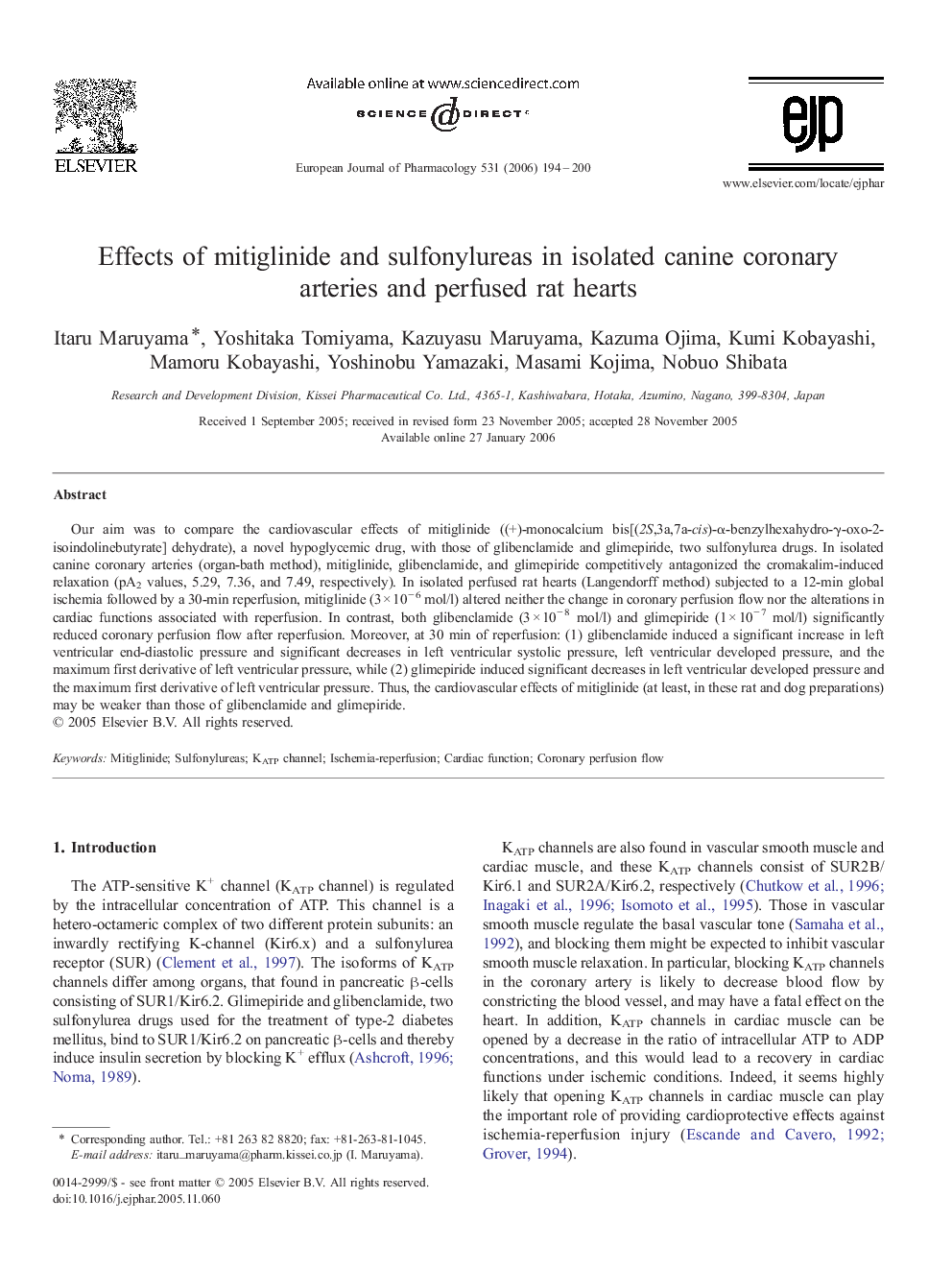| Article ID | Journal | Published Year | Pages | File Type |
|---|---|---|---|---|
| 2537425 | European Journal of Pharmacology | 2006 | 7 Pages |
Our aim was to compare the cardiovascular effects of mitiglinide ((+)-monocalcium bis[(2S,3a,7a-cis)-α-benzylhexahydro-γ-oxo-2-isoindolinebutyrate] dehydrate), a novel hypoglycemic drug, with those of glibenclamide and glimepiride, two sulfonylurea drugs. In isolated canine coronary arteries (organ-bath method), mitiglinide, glibenclamide, and glimepiride competitively antagonized the cromakalim-induced relaxation (pA2 values, 5.29, 7.36, and 7.49, respectively). In isolated perfused rat hearts (Langendorff method) subjected to a 12-min global ischemia followed by a 30-min reperfusion, mitiglinide (3 × 10− 6 mol/l) altered neither the change in coronary perfusion flow nor the alterations in cardiac functions associated with reperfusion. In contrast, both glibenclamide (3 × 10− 8 mol/l) and glimepiride (1 × 10− 7 mol/l) significantly reduced coronary perfusion flow after reperfusion. Moreover, at 30 min of reperfusion: (1) glibenclamide induced a significant increase in left ventricular end-diastolic pressure and significant decreases in left ventricular systolic pressure, left ventricular developed pressure, and the maximum first derivative of left ventricular pressure, while (2) glimepiride induced significant decreases in left ventricular developed pressure and the maximum first derivative of left ventricular pressure. Thus, the cardiovascular effects of mitiglinide (at least, in these rat and dog preparations) may be weaker than those of glibenclamide and glimepiride.
